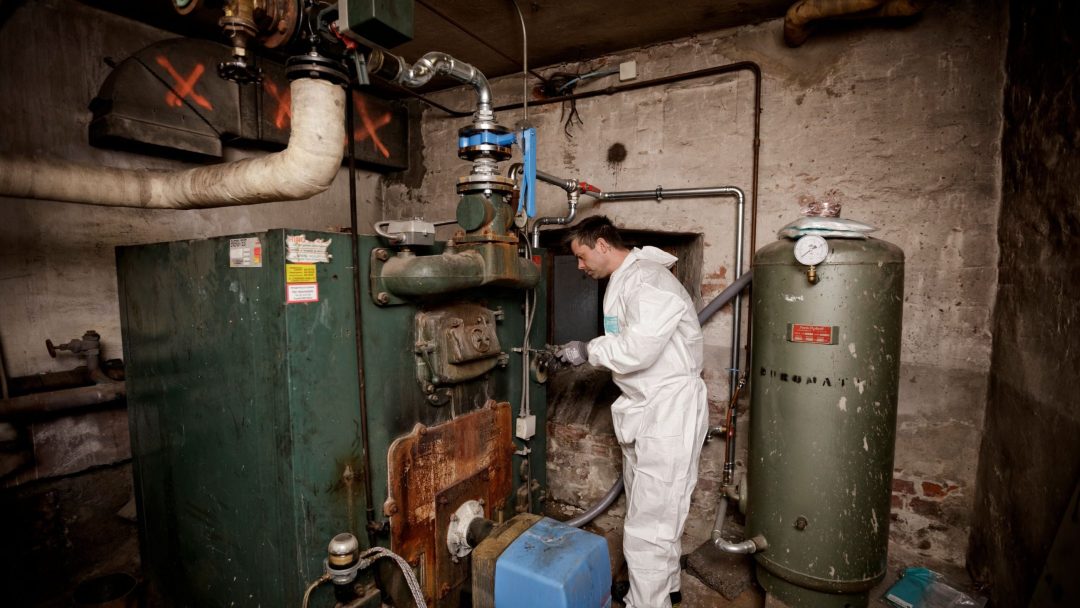Size: large
Type: image

The City of Oslo can be considered Norway’s largest company, and in 2012 the municipality began to measure its own emissions. These emissions primarily came from diesel and petrol vehicles, heating buildings with oil, and construction machinery. Eleven years later, emissions have been reduced by 91 percent.
«The City of Oslo has climate goals that align with the Paris Agreement’s targets. These are among the most ambitious climate goals in the world. It’s great to see that the climate measures that the municipality has implemented for its own operations are helping us achieve these goals», says Heidi Sørensen, Director of Oslo’s Climate Agency.

Heidi Sørensen, Director of the Climate Agency.
The reduction in emissions can be explained by looking into three sectors: transport, energy use in buildings, and construction machinery.
2012: From Now On, We Choose Electric Cars
Road traffic accounts for about half of the greenhouse gas emissions in Oslo. Driving also contributed significantly to emissions in the municipality’s own operations. However, a change occurred in 2012. The municipality signed a framework agreement with Leaseplan to replace its cars with electric vehicles. Consequently, many electric cars were quickly introduced among home care nurses, parking attendants, and other employees involved in the city’s daily operations. As a result, petrol and diesel consumption dropped significantly, saving over a thousand tons of CO2.

Emissions from transport between 2012-2023. Figure: the Climate Agency
2020: Ban on Oil Heating
In 2012, the Parliament requested the government to implement a ban on heating with fossil oil in households and as a primary source in other buildings. Eight years later, in 2020, a national ban came into effect. In the interim, there were support schemes to phase out oil heating. Oslo aimed to phase out oil heating as quickly as possible and therefore had its own support schemes in addition to the national ones.

In 2012, a ban on heating with fossil oil came into effect.
This has had a noticeable impact on Oslo municipality’s buildings, where the use of oil and kerosene for heating plummeted from 2012 to 2015.

Emissions from energy use in buildings between 2012-2023. Figure: the Climate Agency
«It’s exciting to see such clear results in the emission inventory from effective climate measures. Now, there are almost no emissions left in the municipality’s buildings», says Astrid Ståledotter Landstad, climate advisor at the Climate Agency.

Climate advisor Astrid Ståledotter Landstad.
2019: Emission-Free Excavators Required
In 2016, the municipality’s entities began to demand fossil-free operation of construction sites. In 2019, Oslo introduced climate and environmental requirements for all procurement of construction work. Fossil-free operation is a minimum requirement, but those who can offer completely emission-free solutions gain a significant advantage in the competition for contracts.
This has had a significant climate impact and has also attracted international attention. In 2019, the world saw its first emission-free construction site in modern times with a pilot project on Olav V’s street, near Oslo City Hall. Emissions from the municipality’s construction sites are now a fraction of what they were just 11 years ago.

Emission from construction machinery between 2012-2023. Figure: the Climate Agency
All Oslo Entities Contribute
Oslo municipality’s operations encompass everything from schools and kindergartens to nursing homes, fire and rescue services, agencies, and the City Hall itself. Each entity reports its emissions and takes measures to reduce them. The Cemeteries and Burials Agency, for example, previously had emissions from the use of heating oil at the Alfaset crematorium, but switched to hydrotreated vegetable oil two years ago. This reduced emissions by 90 percent.
Additionally, they installed an accumulator tank to allow heat reuse and replaced seven lawnmowers and two trucks with electric alternatives. Now, the Cemeteries and Burials Agency has minimal emissions each year, and the cemeteries have become even quieter.

Electric excavator at the cemetery.
The City of Oslo Nears the Finish Line
By 2030, almost no greenhouse gases should be emitted within the municipality’s borders. The goal is to cut 95 percent of emissions for the entire city compared to 2009 levels. So far, emissions for the entire city of Oslo have been reduced by about 30 percent.
«There is still some way to go to reach the goal, but when Norway’s largest company can cut its own emissions by over 90 percent in eleven years, it shows that it is possible to eliminate most greenhouse gas emissions», says Director Heidi Sørensen.
This article was translated from Norwegian with the assistance of AI.
